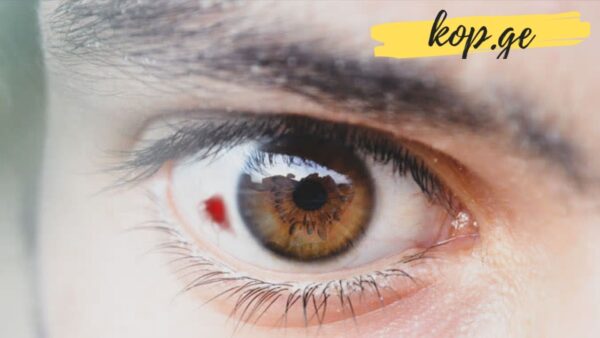Red Spot in the Eye Area: What Should You Do If You Notice It?

Many of us have experienced looking in the mirror and suddenly noticing a red spot on the white part of the eye. At first glance, it can be quite alarming. The mind often jumps to worst-case scenarios, but in reality, the causes of these spots vary widely—from something as harmless as a sneeze to more serious underlying health issues. Understanding why these spots occur and how to respond when you see them is key to protecting both your vision and your overall health.
What Exactly Is a Red Spot on the Eye?
When a red patch appears on the sclera (the white surface of the eye), it is usually caused by a subconjunctival hemorrhage—a small blood vessel has burst beneath the thin, transparent tissue that covers the eye. This may look dramatic because the blood becomes trapped between layers of tissue and creates a vivid red stain.
The good news is that in most cases, these hemorrhages are painless and harmless. They typically do not affect vision, do not cause itching, and resolve on their own. However, it’s still important not to ignore them, especially if they occur frequently or are accompanied by other symptoms.
Common Causes of Red Spots in the Eye
Sneezing or Coughing
Believe it or not, something as simple as a sneeze or a forceful cough can rupture a small blood vessel in the eye. This is because sudden pressure changes in the body can temporarily increase strain on delicate blood vessels.
Eye Injuries or Trauma
Physical trauma to the eye area—even something as minor as rubbing your eyes too hard—can sometimes cause a vessel to break and leave a visible red mark.
Allergies
Allergies often cause itchy, watery eyes. The constant rubbing and irritation can increase the risk of subconjunctival hemorrhage. Additionally, the inflammation associated with allergic reactions weakens the blood vessels in the eyes.
Medical Conditions
High blood pressure (hypertension): This is one of the most common systemic conditions associated with repeated eye hemorrhages.
Diabetes: Poor circulation and fragile blood vessels increase the likelihood of bleeding under the conjunctiva.
Blood clotting disorders: If your body has difficulty clotting properly, even mild strain may cause small hemorrhages.
Certain medications: Blood thinners such as aspirin or warfarin can make bleeding more likely.
Other Triggers
Intense physical exertion, heavy lifting, or even vomiting may put stress on the blood vessels of the eye and result in the sudden appearance of a red spot.
When Should You See a Doctor?
In most cases, a red spot on the eye does not require medical treatment. The hemorrhage will usually clear up within two weeks as the blood is gradually reabsorbed. During this time, the spot may even change colors, much like a bruise on the skin.
However, it’s crucial to seek medical advice if:
The red spot is accompanied by pain, swelling, or vision changes.
You experience frequent or recurring hemorrhages.
You have underlying conditions such as diabetes, hypertension, or bleeding disorders.
The redness spreads or worsens over time instead of fading.
A doctor can rule out more serious problems and provide peace of mind. In rare cases, repeated subconjunctival hemorrhages may signal an undiagnosed systemic illness.
How to Prevent Red Spots in the Eyes
While you cannot completely eliminate the risk, there are several lifestyle measures you can take to reduce the chances of these small hemorrhages:
Strengthen Blood Vessels with a Healthy Diet
Incorporate foods rich in vitamin C and bioflavonoids (often referred to as vitamin P), such as oranges, berries, and leafy greens. These nutrients support capillary health and resilience.
Manage Blood Pressure and Blood Sugar
Since uncontrolled hypertension and diabetes significantly raise the risk of vascular problems—including eye hemorrhages—it’s vital to monitor and manage these conditions regularly.
Avoid Excessive Physical Strain
If you frequently engage in heavy lifting or strenuous workouts, take precautions to avoid excessive pressure build-up. Moderation and proper breathing techniques can help reduce strain.
Protect Your Eyes from Trauma
Be mindful when rubbing your eyes, removing contact lenses, or applying cosmetics. Even minor trauma can sometimes be enough to break a small vessel.
Address Allergies
If you suffer from seasonal allergies, treating them promptly with antihistamines or other remedies can prevent constant eye rubbing and irritation.
Stay Hydrated
Drinking enough water daily helps maintain tissue and vascular health throughout the body, including in the eyes.
The Psychological Factor
A sudden red spot on the eye can be visually striking and even embarrassing in social or professional situations. People may worry that it looks contagious or signals serious illness. While this is rarely the case, acknowledging the emotional impact is important. Reassure yourself and others that in most cases, the condition is temporary and harmless.
Final Thoughts
A red spot in the eye can range from being a minor cosmetic inconvenience to a potential indicator of an underlying health problem. The key is not to panic but also not to dismiss it entirely. Pay attention to how often it occurs, whether it is accompanied by other symptoms, and whether you have risk factors like high blood pressure or diabetes.
Most importantly, seek professional advice if you are uncertain. An eye doctor or general physician can provide clarity, rule out serious concerns, and guide you toward prevention strategies.
By taking good care of your overall health—through diet, stress management, regular check-ups, and healthy lifestyle habits—you can reduce the likelihood of these red spots and keep your eyes not only comfortable but also vibrant and healthy.












